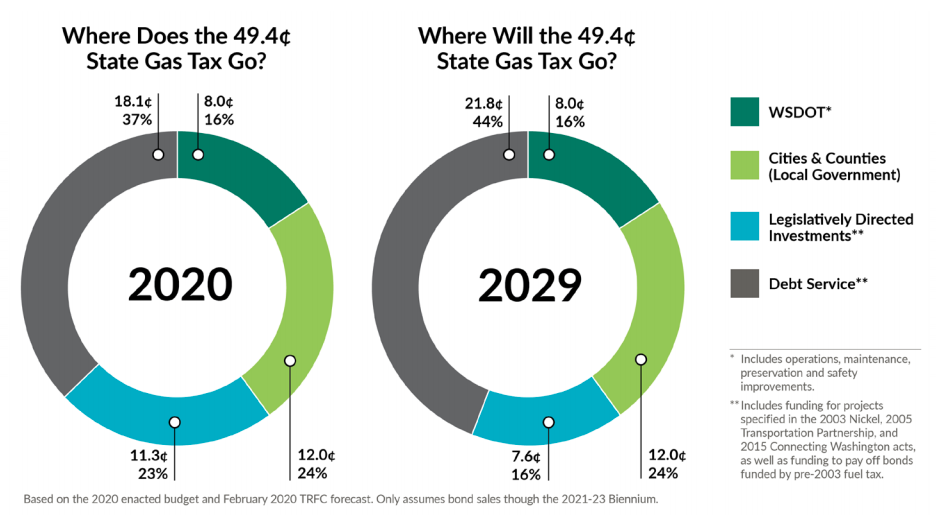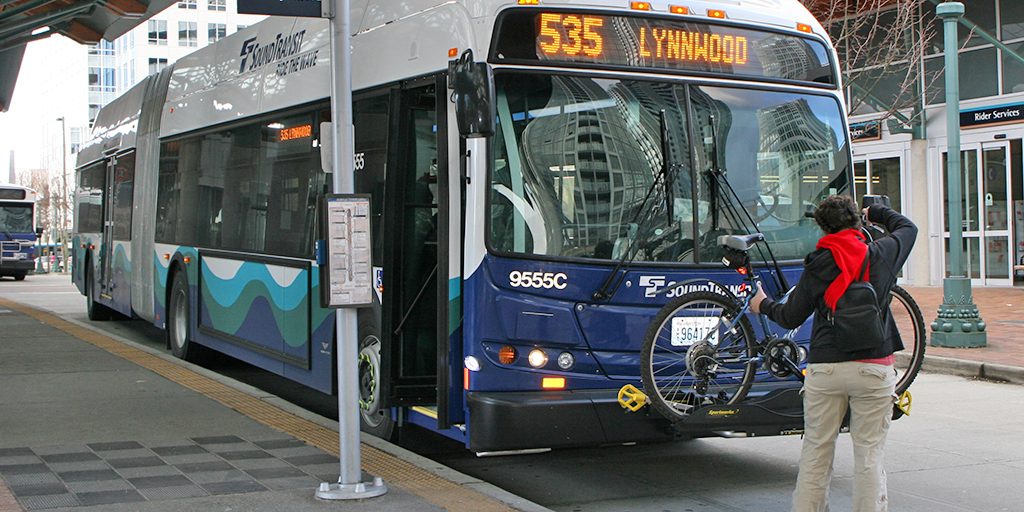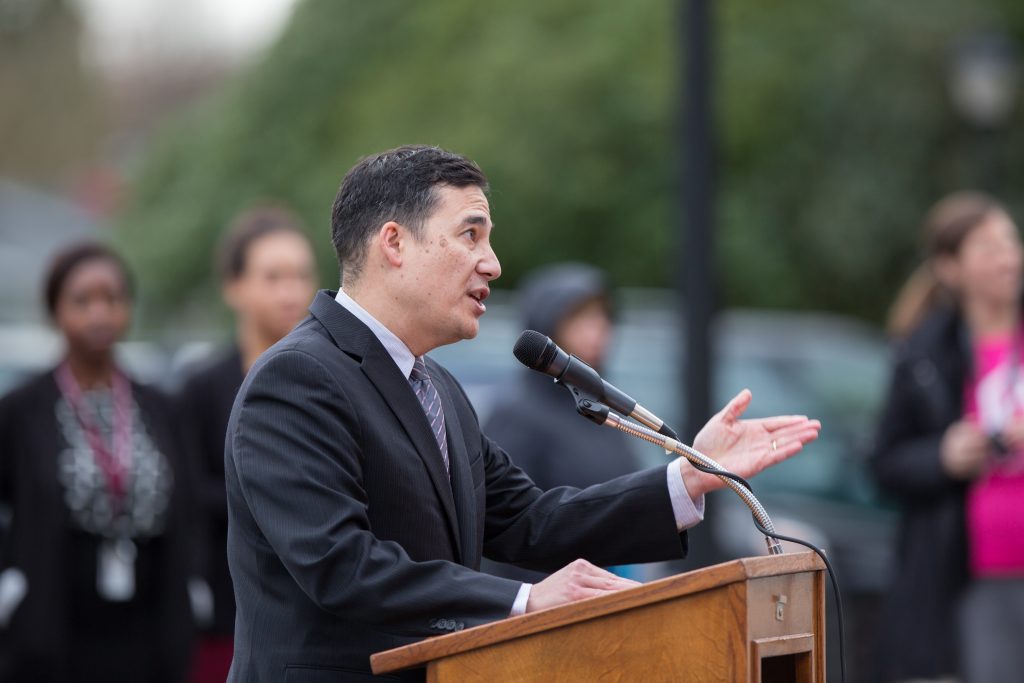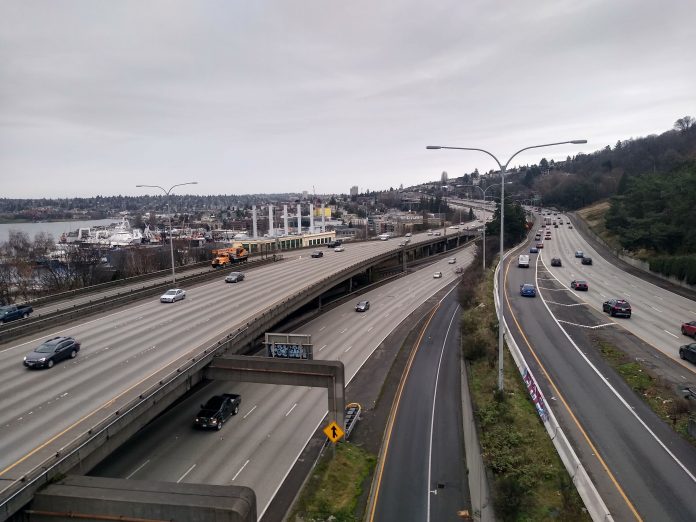As the end of the legislative session draws near on April 25th, the question of whether Washington will pass a new transportation package looms large in the remaining days. Both the House and the Senate have released their respective packages, and they are fairly far apart. The package proposed by House Democrats still invests heavily in expanding Washington’s highways, and is slightly scaled-backed from the ambitious proposal they released in January, but it at least signals a shift away from the “highways, highways, and more highways” packages that have been the norm in Olympia. The Senate proposal spearheaded by transportation chair Steve Hobbs (D-Lake Stevens) is much further out-of-step with what investments Washington needs to shift away from car-dependence and reduce carbon emissions.
This morning the package, finally numbered as SB 5483 last week, gets its first full hearing as an official bill in the Senate’s transportation committee. Here are a few of the most worrisome aspects of the proposal.
It continues to issue debt to pay for unsustainable highway expansion
The legislature has long relied on selling bonds to pay for expanding the state’s highway network, including bonds that the state is still paying off from transportation packages in 2003, 2005, and 2015. In 2020, 37% of the revenue generated from Washington’s 49.4-cent gas tax was going to debt service on past transportation projects. By 2029, that is projected to grow to 44%. The House proposal doesn’t issue any new bonds, but the Senate proposal would issue $5.5 billion in bonds to continue this cycle and kick the can down the road. The sale of bonds is ultimately expected to cost the state an extra $1.7 billion.

Arguments that the gas tax is regressive have merit, but using the revenue from a gas tax to pay off debt from decades-old highway projects is particularly regressive, no matter how you spin it.
It taxes new housing construction
The Senate package would raise an estimated $800 million, or around $50 million per year for 16 years, by taxing the increased assessed value of new construction. Residential, commercial, and manufacturing development would all be impacted at different rates, but the bottom line is additional costs for new housing construction at a time when many cities in the state are facing an affordable housing crisis and struggling to generate enough new housing.
Taxing increased assessed value is particularly upside-down because dense infill housing in central Puget Sound is the most valuable real estate in Washington and yet dense infill housing is the most environmentally friendly housing being built in the state, and the revenue, again, would be invested into expanding the state’s highway system by funding projects that could be funded by the gas tax and other restricted revenues, freeing up those funds for new highway projects.
It uses cap-and-invest revenues to spur carbon generation
There are a lot of different opinions on what the impact of Washington’s Climate Commitment Act, the cap-and-invest bill that the state senate passed last week, will be, but there’s far broader agreement that revenues generated from reducing carbon emissions shouldn’t then be invested in generating more carbon emissions. And yet that’s what the Forward Washington package would do.
According to forecasts, $5.1 billion would be generated by the cap-and-invest program and handed over for transportation. But there’s some balance sheet shenanigans happening: the package proposes to use a large chunk of these “green revenues” to pay for court-mandated upgrades to culverts, undoing the environmental damage of the current highway system that have devastated salmon runs. This leaves the nearly 10-cent increase to the state’s gas tax available to fund more damage in the form of highway expansion. At best, the investments from cap-and-invest would go toward mitigating other investments the state is making, another completely-backward aspect of the entire proposal.
It tolls buses, hitting transit agencies and schools
The legislation authorizing the transportation package also includes a provision taking away the authority of the Washington Transportation Commission, which sets toll rates on state highways, from exempting vehicles like public transit and school buses from tolls. This is another symbolic poke-in-the-eye. We don’t know yet how much money the state would generate from taxing transit agencies in this way, but it’s just a bad idea all around.

It barely increases funds for walking and rolling
The Senate’s package would only allocate 3% of the nearly $18 billion it collects over 16 years to investments in making walking and rolling safer and more accessible to Washington residents, including the popular Safe Routes to Schools program. This is a tiny increase over the 2.6% that went to those types of projects in Connecting Washington, the last statewide transportation package.

Senator Hobbs should take a look at the Active Transportation Plan produced by his own transportation department to see how increasing those investments could pay huge dividends statewide for mobility, in addition to improving safety. Washington is supposed to have a Target Zero goal of eliminating all traffic fatalities by 2030, a goal that a package like this also appears to completely ignore.
This package could move fast as the end of the session approaches. Write your state senator, particularly if your state senator is one of the Democrats on the transportation committee with the ability to vote to not send this package out of committee. This could be Washington’s last chance to pass a sustainable transportation package for many years, and we can’t let the Senate’s backwards proposal lead the way.
In addition to emailing senators, those interested in weighing on the Forward Washington bill can submit a comment via the legislature’s online form.
Ryan Packer has been writing for The Urbanist since 2015, and currently reports full-time as Contributing Editor. Their beats are transportation, land use, public space, traffic safety, and obscure community meetings. Packer has also reported for other regional outlets including BikePortland, Seattle Met, and PubliCola. They live in the Capitol Hill neighborhood of Seattle.


